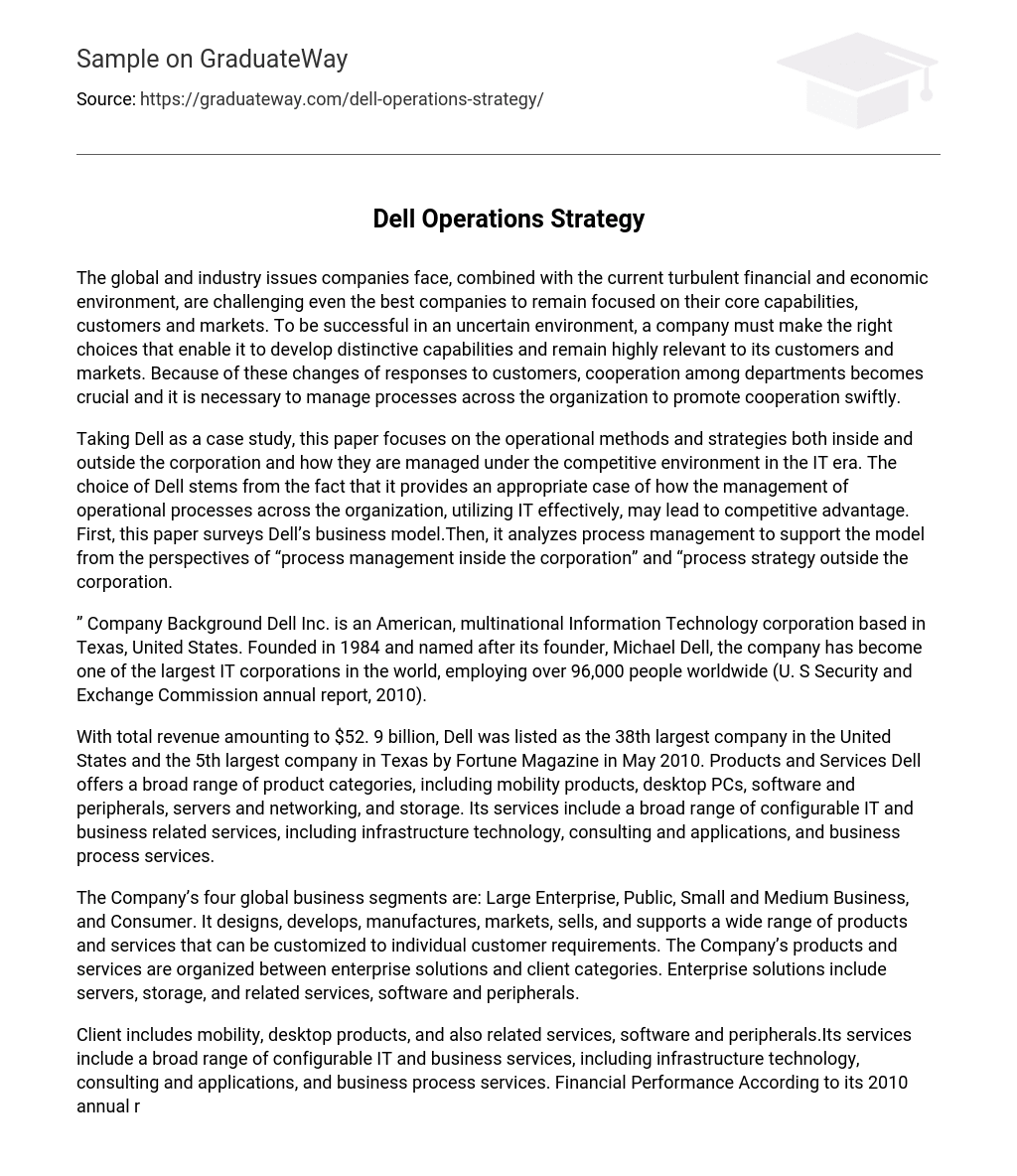The global and industry issues companies face, combined with the current turbulent financial and economic environment, are challenging even the best companies to remain focused on their core capabilities, customers and markets. To be successful in an uncertain environment, a company must make the right choices that enable it to develop distinctive capabilities and remain highly relevant to its customers and markets. Because of these changes of responses to customers, cooperation among departments becomes crucial and it is necessary to manage processes across the organization to promote cooperation swiftly.
Taking Dell as a case study, this paper focuses on the operational methods and strategies both inside and outside the corporation and how they are managed under the competitive environment in the IT era. The choice of Dell stems from the fact that it provides an appropriate case of how the management of operational processes across the organization, utilizing IT effectively, may lead to competitive advantage. First, this paper surveys Dell’s business model.Then, it analyzes process management to support the model from the perspectives of “process management inside the corporation” and “process strategy outside the corporation.
” Company Background Dell Inc. is an American, multinational Information Technology corporation based in Texas, United States. Founded in 1984 and named after its founder, Michael Dell, the company has become one of the largest IT corporations in the world, employing over 96,000 people worldwide (U. S Security and Exchange Commission annual report, 2010).
With total revenue amounting to $52. 9 billion, Dell was listed as the 38th largest company in the United States and the 5th largest company in Texas by Fortune Magazine in May 2010. Products and Services Dell offers a broad range of product categories, including mobility products, desktop PCs, software and peripherals, servers and networking, and storage. Its services include a broad range of configurable IT and business related services, including infrastructure technology, consulting and applications, and business process services.
The Company’s four global business segments are: Large Enterprise, Public, Small and Medium Business, and Consumer. It designs, develops, manufactures, markets, sells, and supports a wide range of products and services that can be customized to individual customer requirements. The Company’s products and services are organized between enterprise solutions and client categories. Enterprise solutions include servers, storage, and related services, software and peripherals.
Client includes mobility, desktop products, and also related services, software and peripherals.Its services include a broad range of configurable IT and business services, including infrastructure technology, consulting and applications, and business process services. Financial Performance According to its 2010 annual report, Dell’s revenue as at January 2010, stood at $52. 9 billion with $43.
69billion (82. 6%) generated from products while $9. 2 billion (17. 4%) was generated from its services.
A comparison with the 2009 fiscal year however reveals a decrease in products revenue and unit shipments year-over-year by 17% and 6% respectively.This has been attributed to a decrease in customer demand from its commercial segments and lower average selling prices in its customer segment. Services revenue however shows a year-over-year increase by 5% during the 2010 fiscal year owing to its acquisition of Perot Systems which contributed $588 million in services revenue during the fourth quarter of 2010. But for the acquisition of Perot Systems, the company’s revenue dropped 2%.
This is because its services are traditionally tied to the sale of hardware which implies that the 6% decline in hardware demand negatively impacted its services revenue.





